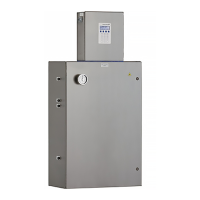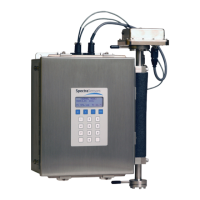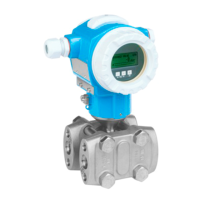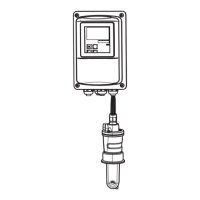SS2100i-2 TDLAS Gas Analyzer Operating Instructions
Endress+Hauser 11
2.4.1 Differential TDLAS
SpectraSensors differential TDLAS technology involves subtracting two spectrums from one another. A “dry”
spectrum, a response from the sample when the analyte of interest has been completely removed, is subtracted from
the “wet” spectrum, a response from the sample when the analyte is present. The remainder is a spectrum of the
pure analyte. This technology is used for very low or trace measurements and is also useful when the background
matrix changes over time.
2.4.2 Wavelength modulation spectroscopy (WMS) signal detection
Endress+Hauser takes the fundamental absorption spectroscopy concept a step further by using a sophisticated
signal detection technique called wavelength modulation spectroscopy (WMS). When employing WMS, the laser
drive current is modulated with a kHz sine wave as the laser is rapidly tuned. A lock-in amplifier is then used to
detect the harmonic component of the signal that is at twice the modulation frequency (2f). Refer to the figure
below, which is shown in arbitrary units (a.u.). This phase-sensitive detection enables the filtering of low-frequency
noise caused by turbulence in the sample gas, temperature and/or pressure fluctuations, low-frequency noise in the
laser beam or thermal noise in the detector.
Fig 4. Typical normalized 2f signal showing species concentration proportional to height.
A. 2f peak height
B. Normalized 2f signal
With the resulting low-noise signal and use of fast post-processing algorithms, reliable parts per million (ppm) or
parts per billion (ppb) detection levels are possible (depending on target and background species) at real-time
response rates.
All Endress+Hauser TDLAS gas analyzers employ the same design and hardware platform. Measuring different trace
gases in various mixed hydrocarbon background streams is accomplished by selecting a different optimum diode
laser wavelength between 700-3000 nm, which provides the least amount of sensitivity to background stream
variations.
2.4.3 Sample conditioning system
The analyzer may be integrated with a sample conditioning system (SCS) designed to meet the sample condition
requirements for the analyzer while preserving sample integrity and minimizing lag time. Refer to the SCS Operating
Instruction for more information.
2.4.4 Determining firmware version
When the analyzer is powered on for the first time, the firmware version will display on the system LCD display for
approximately seven seconds. Refer to Powering Up the Analyzer in the Standard documentation for this analyzer

